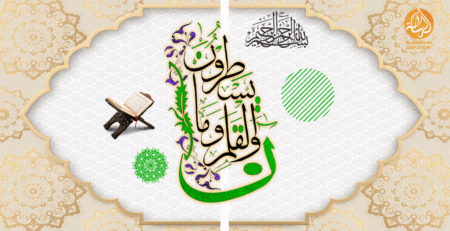Islamic Architecture: Al-Masjid Al-Haram, Ka’aba, Makka
Islamic architecture, with its intricate designs and profound symbolism, reflects the rich cultural and spiritual heritage of Islam. At the heart of Islamic architecture lies Al-Masjid Al-Haram, the sacred mosque housing the Ka’aba, located in the holy city of Mecca. This article delves into the historical significance, architectural marvels, and enduring legacy of Al-Masjid Al-Haram and the Ka’aba.
Introduction to Islamic Architecture
Islamic architecture is renowned for its unique blend of artistic expression, mathematical precision, and spiritual symbolism. It encompasses a wide range of structures, including mosques, palaces, mausoleums, and fortifications, each bearing distinct features that reflect the cultural and historical context of the Muslim world.
Historical Background of Al-Masjid Al-Haram
Al-Masjid Al-Haram, or the Grand Mosque, holds a central place in Islamic history and tradition. Its origins can be traced back to the time of Prophet Ibrahim (Abraham), who, according to Islamic belief, along with his son Isma’il (Ishmael), constructed the Ka’aba as a sanctuary for monotheistic worship.
Significance of Ka’aba in Islamic Architecture
The Ka’aba, a cubic structure draped in black cloth, known as the Kiswa, is the focal point of Al-Masjid Al-Haram and the holiest site in Islam. Muslims around the world face towards the Ka’aba during their daily prayers, symbolizing unity and devotion to Allah.
Architectural Features of Al-Masjid Al-Haram
Exterior Design
The exterior of Al-Masjid Al-Haram is characterized by its vast courtyard, minarets, and imposing gates adorned with intricate calligraphy and geometric patterns. The sheer scale of the mosque reflects the grandeur of Islamic architecture and the spiritual significance attached to it.
Interior Layout
Inside the mosque, rows of pillars and arches create a sense of symmetry and harmony, guiding worshippers towards the Ka’aba. The interior is adorned with ornate chandeliers, marble floors, and mihrabs (prayer niches) that highlight the reverence and sanctity of the space.
Symbolism and Spiritual Significance
Every element of Al-Masjid Al-Haram, from its geometric patterns to its orientation towards the Ka’aba, carries symbolic meaning in Islamic theology. The architecture serves as a visual representation of Islamic principles such as unity, humility, and submission to the divine will.
Evolution of Al-Masjid Al-Haram over Time
Throughout history, Al-Masjid Al-Haram has undergone several expansions and renovations to accommodate the growing number of pilgrims and worshippers. From its humble beginnings as a simple structure to its present-day magnificence, the mosque has evolved while preserving its sacred aura.
Influence of Greek and Roman Architecture
The influence of Greek and Roman architecture can be seen in certain elements of Al-Masjid Al-Haram, particularly in the use of arches, columns, and domes. However, Islamic architects infused these classical motifs with their own aesthetic sensibilities, creating a unique fusion of styles.
Cultural and Religious Importance
Al-Masjid Al-Haram holds immense cultural and religious significance for Muslims worldwide. It serves as a symbol of unity and solidarity among the ummah (Muslim community) and is the focal point of major religious rituals such as Hajj and Umrah.
Modern Innovations and Challenges
In recent years, modern innovations such as air conditioning, escalators, and advanced crowd management systems have been introduced to enhance the pilgrim experience and ensure safety and comfort during peak times. However, rapid urbanization and development pose challenges to the preservation of traditional architectural heritage.
Preservation Efforts and Conservation
Efforts are underway to preserve and restore the historic fabric of Al-Masjid Al-Haram while incorporating sustainable design principles. Conservation projects aim to safeguard the mosque’s architectural integrity and cultural significance for future generations.
Visitor Experience and Pilgrimage
For millions of Muslims who visit Al-Masjid Al-Haram each year, the pilgrimage represents a deeply spiritual journey marked by devotion, reflection, and communal solidarity. The experience of circumambulating the Ka’aba and performing prayers in its vicinity is profoundly moving for believers.
Sustainable Practices in Architecture
As concerns about environmental sustainability grow, architects are exploring innovative solutions to reduce the ecological footprint of religious structures like Al-Masjid Al-Haram. Solar panels, water recycling systems, and green building materials are being integrated into new construction projects to minimize environmental impact.
Global Impact and Recognition
The architectural splendor of Al-Masjid Al-Haram has garnered global recognition and admiration, attracting visitors and scholars from diverse cultural backgrounds. Its timeless beauty and spiritual significance transcend boundaries, serving as a testament to the universal appeal of Islamic art and architecture.
Future Prospects and Development Plans
Looking ahead, plans are underway to further expand and modernize Al-Masjid Al-Haram to accommodate the growing number of pilgrims and visitors. These ambitious projects aim to enhance accessibility, sustainability, and safety while preserving the sanctity of the holy site.
Conclusion
In conclusion, Al-Masjid Al-Haram and the Ka’aba stand as enduring symbols of Islamic faith, architectural innovation, and cultural heritage. Their timeless beauty and spiritual significance continue to inspire awe and reverence, serving as beacons of light and hope for believers around the world.
FAQs
- What is the significance of the Ka’aba in Islam?
- The Ka’aba is considered the holiest site in Islam and serves as the focal point for Muslim prayers and pilgrimage.
- How old is Al-Masjid Al-Haram?
- The mosque has a rich history dating back thousands of years, with numerous expansions and renovations over time.
- What are some challenges facing the preservation of Islamic architecture?
- Rapid urbanization, development pressures, and environmental concerns pose challenges to the preservation of historic structures like Al-Masjid Al-Haram.
- How does Islamic architecture reflect cultural and religious values?
- Islamic architecture incorporates geometric patterns, calligraphy, and symbolic motifs that reflect the principles of unity, humility, and devotion found in Islam.
- **What are some sustainable practices being












Leave a Reply